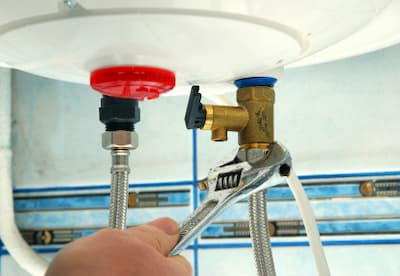Important Advice on Maintaining Your Home's Hot Water System
Important Advice on Maintaining Your Home's Hot Water System
Blog Article
Each person seems to have their own individual opinions about Water Heater Maintenance Tips You Can't Afford to Forget.

Hot water is essential for day-to-day comfort, whether it's for a revitalizing shower or washing dishes. To guarantee your warm water system runs effectively and lasts much longer, regular upkeep is key. This short article gives practical ideas and understandings on how to preserve your home's warm water system to avoid interruptions and pricey repair work.
Introduction
Preserving your home's warm water system might seem overwhelming, but with a few straightforward steps, you can ensure it operates efficiently for years ahead. This overview covers everything from recognizing your hot water system to do it yourself upkeep tips and recognizing when to call professional assistance.
Relevance of Keeping Your Hot Water System
Routine upkeep not just expands the life expectancy of your hot water system however additionally ensures it operates successfully. Neglecting maintenance can lead to reduced effectiveness, greater energy costs, and even early failure of the system.
Indicators Your Hot Water System Requirements Maintenance
Knowing when your warm water system needs focus can avoid major problems. Look out for indicators such as inconsistent water temperature, odd noises from the heating system, or rustic water.
Purging the Hot Water Heater
Flushing your hot water heater eliminates debris buildup, improving performance and extending its life.
Checking and Changing Anode Rods
Anode poles avoid corrosion inside the container. Checking and changing them when broken is important.
Facility Problems Requiring Specialist Assistance
Examples consist of major leakages, electric issues, or if your water heater is regularly underperforming.
Routine Specialist Upkeep Perks
Expert maintenance can consist of complete evaluations, tune-ups, and ensuring conformity with safety and security requirements.
Examining and Changing Temperature Settings
Readjusting the temperature level setups makes sure ideal performance and security.
DIY Tips for Upkeep
You can do several maintenance tasks on your own to maintain your warm water system in leading condition.
Checking for Leaks
Regularly inspect pipelines and links for leaks, as these can result in water damage and greater expenses.
Understanding Your Warm Water System
Prior to diving right into upkeep jobs, it's practical to comprehend the fundamental parts of your warm water system. Usually, this includes the water heater itself, pipes, anode rods, and temperature controls.
Monthly Upkeep Tasks
Normal month-to-month checks can assist catch minor issues before they rise.
Examining Pressure Relief Valves
Evaluating the pressure safety valve guarantees it functions correctly and stops extreme pressure buildup.
Shielding Pipes
Insulating warm water pipelines minimizes warm loss and can save power.
When to Call a Specialist
While DIY maintenance is beneficial, some concerns call for expert knowledge.
Conclusion
Normal upkeep of your home's hot water system is essential for effectiveness, longevity, and price savings. By following these ideas and understanding when to seek specialist assistance, you can make sure a reputable supply of hot water without unanticipated interruptions.
How to Maintain an Instant Hot Water Heater
Before tinkering with your hot water heater, make sure that it’s not powered on. You also have to turn off the main circuit breaker and shut off the main gas line to prevent accidents. Also turn off the water valves connected to your unit to prevent water from flowing into and out of the appliance. 2. When you’re done, you have to detach the purge valves’ caps. These look like the letter “T†and are situated on either side of the water valves. Doing so will release any pressure that has accumulated inside the valves while at the same time avoid hot water from shooting out and burning your skin. 3. When the purge valves’ caps are removed, you have to connect your hosing lines to the valves. Your unit should have come with three hoses but if it didn’t, you can purchase these things from any hardware or home repair shops. You can also get them from retail stores that sell water heating systems. Read the user’s manual and follow it to complete this task properly. When the hosing lines are connected, open the purge port’s valves. 4. You should never use harsh chemical cleaners or solutions when cleaning your unit. Make use of white vinegar instead. It should be undiluted and you’ll probably use about 2 gallons. 5. Now flush your water heater. This task should probably take about 40 minutes. We can’t give you specific directions for this because the procedure is carried out depending on the type, model and brand of your heater. With that being said, refer to the user’s manual. 6. When you’re done draining the unit, you have to turn off the purge port valves again. Remove the hosing lines that you earlier installed on each of the water valves. Put the valve caps (purge port) back in their respective places and be very careful so as not to damage the rubber discs that are found inside these caps. 7. Now that everything’s back in place, check your user’s manual again to find out how to reactivate your water heating system. 8. Once it is working, turn one of your hot water faucets on just to let air pass through the heater’s water supply pipes. Leave the tap on until water flows smoothly out of it. https://www.orrplumbing.com/blog/2014/september/how-to-maintain-an-instant-hot-water-heater/

As an avid reader on What Kind of Maintenance Do Water Heaters Need?, I imagined sharing that short article was a great idea. Remember to pause to distribute this article if you enjoyed reading it. We value your readership.
Set An Appointment Report this page